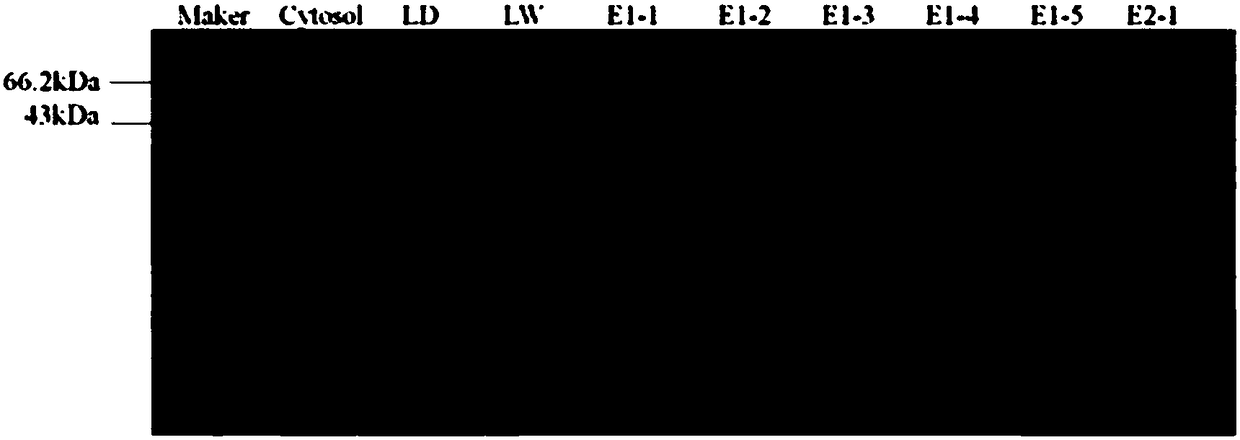Anti-plant soft rot protein, coding gene of protein and built disease-resistant strain
A soft rot and plant technology, applied in the field of disease-resistant strains, can solve problems such as reducing the survival rate of banana plants, and achieve significant antibacterial effects, easy crystallization, and high stability
- Summary
- Abstract
- Description
- Claims
- Application Information
AI Technical Summary
Problems solved by technology
Method used
Image
Examples
Embodiment 1
[0023] One, the construction method of anti-plant soft rot protein and its genetic engineering strain:
[0024] 1. Amplify the target gene
[0025] According to the plasmid map of the plasmid, suitable enzyme cutting sequences are added to both ends of the artificial synthesis, respectively containing the nucleotide sequences of the genes shown in SEQ ID NO: 1 and SEQ ID NO: 3, and then recovered.
[0026] 2. Plasmid extraction and recombinant transformation
[0027] 2.1 Plasmid extraction
[0028] The strains storing the plasmids were activated in shake flasks and cultured for 12 hours. In order to prevent loss of the plasmids, 100 μL of antibiotics were added to 100 mL of LB liquid medium.
[0029] According to the operation method of the plasmid quick mini-extraction kit, the fresh bacterial liquid was subjected to the steps of harvesting, resuspension, lysis, neutralization, DNA binding, washing and elution in sequence for plasmid extraction, and the obtained plasmid was...
Embodiment 2
[0084] Shake flask fermentation:
[0085] Shake flasks to ferment pMK3BS-1 or pMK3BS-3 strains, the medium is 1.5% sucrose, 1.5% yeast extract powder, MgCl 2 0.5% and the balance in distilled water.
[0086] The optimum temperature for fermentation is 33-35°C, the optimum pH value is 7.0-7.2; the optimum liquid volume is 56mL / 500mL.
[0087] Fermentation tank fermentation:
[0088] Fermentation tank pMK3BS-1 or pMK3BS-3 strains, the medium is 0.75% sucrose, 0.75% corn starch, 0.75% yeast extract powder, 0.75% soybean cake powder, 0.3% MgCl 2 , 0.3%K 2 HPO 4 , 0.3% KH 2 PO 4 and the remainder of distilled water.
[0089] The optimum temperature for fermentation is 33-35°C, the optimum pH value is 7.0-7.2; the optimum stirring speed is 300r / min. During the fermentation process, sterile air was always introduced.
[0090] The growth of pMK3BS-1 or pMK3BS-3 strain in the fermentor was obviously better than that in the shake flask fermentation.
PUM
 Login to View More
Login to View More Abstract
Description
Claims
Application Information
 Login to View More
Login to View More - R&D
- Intellectual Property
- Life Sciences
- Materials
- Tech Scout
- Unparalleled Data Quality
- Higher Quality Content
- 60% Fewer Hallucinations
Browse by: Latest US Patents, China's latest patents, Technical Efficacy Thesaurus, Application Domain, Technology Topic, Popular Technical Reports.
© 2025 PatSnap. All rights reserved.Legal|Privacy policy|Modern Slavery Act Transparency Statement|Sitemap|About US| Contact US: help@patsnap.com



